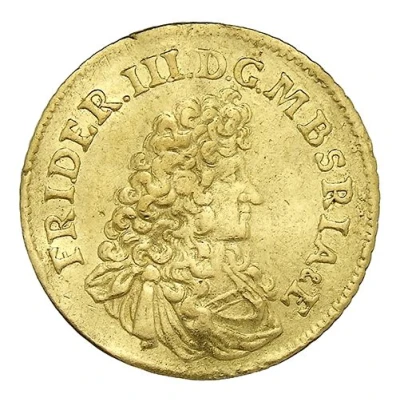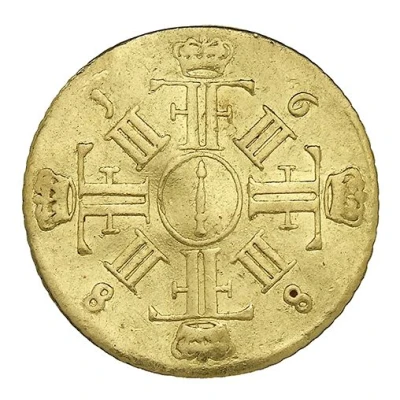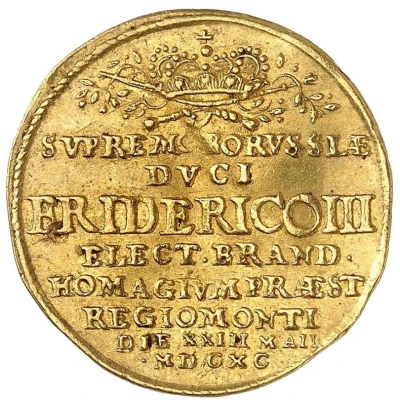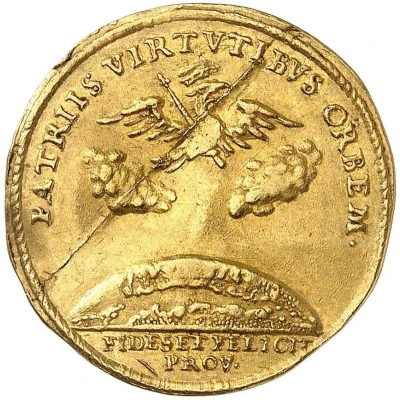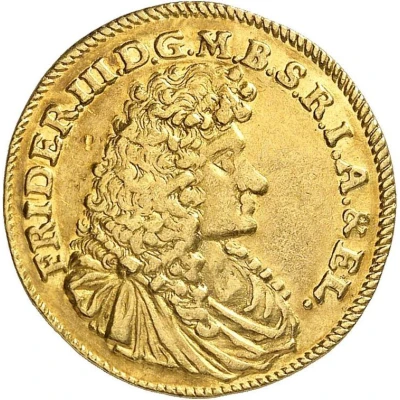
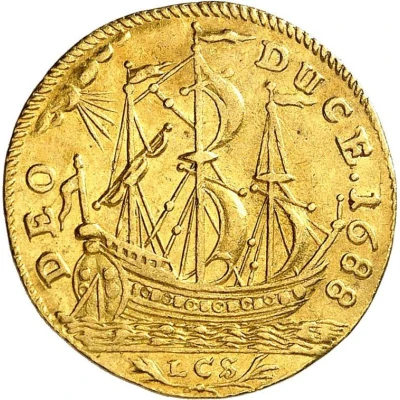

© Fritz Rudolf Künker GmbH & Co. KG, Osnabrück and Lübke & Wiedemann KG, Leonberg
1 Ducat - Frederick III Guinea-Ducat
| Gold (.986) | 3.46 g | - |
| Issuer | State of Brandenburg-Prussia (German States) |
|---|---|
| Margrave | Frederick III (Friedrich III) (1688-1701) |
| Type | Standard circulation coin |
| Years | 1688-1690 |
| Value | 1 Ducat |
| Currency | Thaler (1618-1701) |
| Composition | Gold (.986) |
| Weight | 3.46 g |
| Shape | Round |
| Demonetized | Yes |
| Updated | 2024-10-05 |
| Numista | N#199100 |
|---|---|
| Rarity index | 100% |
Reverse
Full-rigged sailing ship on water to right. One gust of wind coming from clouds on the top left.
Script: Latin
Lettering:
DEO DUCE . 1688
LCS
Comment
Guinea ducats (ship ducats) were minted in Berlin from African gold, between 1683-1696, after Friedrich Wilhelm founded the Großfriedrichsburg colony (modern-day Ghana) on the coast of Guinea in 1682. The minting costs were very high, but showcased a strong symbol of early colonization by a German prince. Krause mentions these coins were intended for trade with Guinea.Mint Master: LCS - Lorenz Christoph Schneider (1682-1701).
The coin in the main image (3.46g, Extremely Fine):
◦ Auctioned by Fritz Rudolf Künker GmbH & Co. KG, Auction 331, 30 January 2020, Lot 13. Sold for 24,000 EUR.
Interesting fact
One interesting fact about the 1 Ducat - Frederick III (Guinea-Ducat) 1688-1690 from State of Brandenburg-Prussia (German States) is that it was minted during a time of great economic and political change in Europe. The coin was issued during the reign of Frederick III, who was the Elector of Brandenburg and the King of Prussia. This was a period of significant expansion and modernization for the region, and the coin reflects this growth and change. The use of gold in the coin's minting was a symbol of the region's wealth and power, and the coin's design features images of the king and other important figures from the time period. Overall, this coin is a fascinating piece of history that provides insight into the economic, political, and cultural developments of 17th century Europe.
